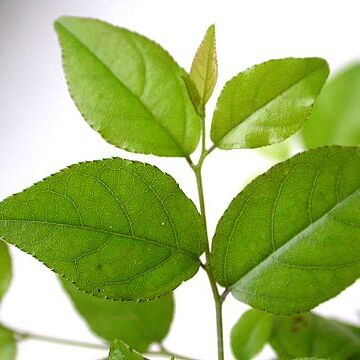Shrubs or woody vines [trees], arching, sprawling, drooping, or clambering [erect], tendrils absent, armed with thorns (sometimes not prominent); bud scales present. Stems not twining, hairy. Leaves persistent or tardily deciduous, present at flowering, usually opposite to subopposite, sometimes alternate distally; blade not gland-dotted; pinnately veined, secondary veins not strongly parallel [± parallel], tertiary veins reticulate. Inflorescences terminal and axillary, overtopping or extending beyond foliage, spikelike or spicate, paniclelike thyrses, [5–]30–120[–150]-flowered; peduncles and pedicels not fleshy in fruit. Pedicels usually absent, rarely present. Flowers bisexual; hypanthium shallowly cupulate to hemispheric, 1–2 mm wide; sepals 5, erect, yellowish green, triangular, ± fleshy, keeled adaxially; petals 5, white to yellow, hooded, spatulate, short-clawed; nectary fleshy, cupulate, distally free from hypanthium; stamens 5; ovary superior, 2–3-locular; style 1. Fruits drupes; stones (2–)3, tardily dehiscent.
Evergreen or deciduous shrubs, often scandent, sometimes small trees or (in Australia) lianes, climbing by recurved ramal thorns. Leaves subopposite or opposite, petiolate, concolorous, penniveined; stipules free, caducous. Inflorescences axillary, comprising pseudoracemes or little-branched panicles of 1-flowered cymes (each flower subtended by 3 bracts). Flowers bisexual, 5-merous. Hypanthium cup-shaped. Sepals erect or incurved, persistent on the fruit. Petals cucullate or longitudinally rolled around the stamens, indistinctly clawed, incurved or erect. Stamens longer than the petals, incurved or erect. Disc conspicuous, lining the hypanthium, smooth, glabrous. Ovary superior; carpels 2 or 3; style slightly lobed. Fruit a fleshy drupe with basal torus.

